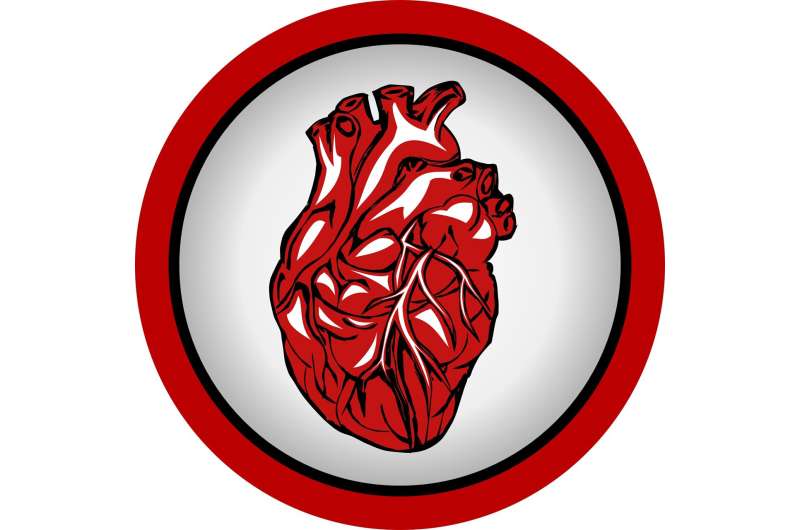This article has been reviewed according to Science X's editorial process and policies. Editors have highlighted the following attributes while ensuring the content's credibility:
fact-checked
proofread
Risk predictive model developed for patients with multivessel coronary artery lesions

The severity and prognosis of coronary artery disease are closely associated with treatment strategy choice. To achieve timely, accurate, early selection of a suitable treatment plan and assess patients' prognosis, researchers developed an effective predictive model for early identification of high-risk patients according to lesion severity. The work is published in the journal Cardiovascular Innovations and Applications.
Among the 510 patients with chest pain admitted to the Qinghai Red Cross Hospital between August 2018 and October 2019, 386 had coronary artery disease detected by coronary angiography.
A total of 24 demographic characteristics and serum markers were analyzed in study participants. Least absolute shrinkage and selection operator regression were used to select variables, and multivariate logistic regression was used to build predictive models by using nominal plots. The discriminatory power of the models was evaluated with the area under the receiver operating characteristic curve (AUC).
Predictive models were calibrated with calibration plots and the Hosmer–Lemeshow test. Their clinical validity was evaluated via decision curve analysis.
Data were randomly divided (7:3) into training (358 cases) and test (152 cases) sets. The predictive model included sex, age, smoking status, heart rate, systolic blood pressure, diastolic blood pressure, albumin, urea nitrogen, creatinine, uric acid, total cholesterol, and high-density lipoprotein cholesterol as predictors.
The AUCs for the training and test sets were 0.793 and 0.732, respectively. The predictive model showed a good fit, and decision curve analysis indicated the clinical validity of the predictive model.
An effective risk predictive model was developed with good clinical value for predicting multivessel disease. Smoking cessation, lowering creatinine, and increasing HDL cholesterol concentrations might decrease the risk of developing multivessel disease, thereby avoiding severe disease.
More information: Jun Li et al, Model for Patients with Multivessel Coronary Artery Lesions in the Highlands Region (Qinghai Province, Northwest China), Cardiovascular Innovations and Applications (2024). DOI: 10.15212/CVIA.2023.0084





















